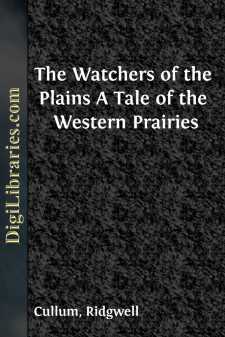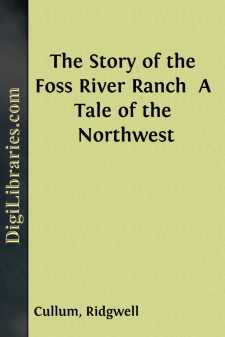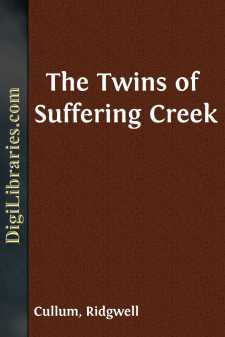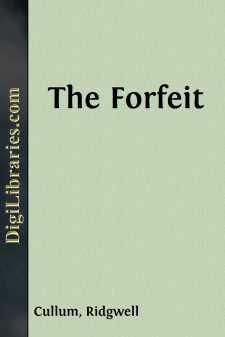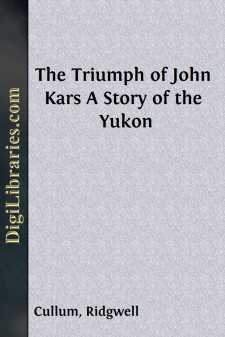Categories
- Antiques & Collectibles 13
- Architecture 36
- Art 48
- Bibles 22
- Biography & Autobiography 813
- Body, Mind & Spirit 142
- Business & Economics 28
- Children's Books 14
- Children's Fiction 11
- Computers 4
- Cooking 94
- Crafts & Hobbies 4
- Drama 346
- Education 46
- Family & Relationships 57
- Fiction 11829
- Games 19
- Gardening 17
- Health & Fitness 34
- History 1377
- House & Home 1
- Humor 147
- Juvenile Fiction 1873
- Juvenile Nonfiction 202
- Language Arts & Disciplines 88
- Law 16
- Literary Collections 686
- Literary Criticism 179
- Mathematics 13
- Medical 41
- Music 40
- Nature 179
- Non-Classifiable 1768
- Performing Arts 7
- Periodicals 1453
- Philosophy 64
- Photography 2
- Poetry 896
- Political Science 203
- Psychology 42
- Reference 154
- Religion 513
- Science 126
- Self-Help 84
- Social Science 81
- Sports & Recreation 34
- Study Aids 3
- Technology & Engineering 59
- Transportation 23
- Travel 463
- True Crime 29
The Watchers of the Plains A Tale of the Western Prairies
by: Ridgwell Cullum
Description:
Excerpt
A LETTER
A solitary hut, dismal, rectangular, stands on the north bank of the White River. Decay has long been at work upon it, yet it is still weather-proof. It was built long before planks were used in the Bad Lands of Dakota. It was built by hands that aimed only at strength and durability, caring nothing for appearances. Thus it has survived where a lighter construction must long since have been demolished.
And it still affords habitation for man. The windows have no glass; the door is a crazy affair; there is an unevenness in the setting of the lateral logs which compose its walls; the reed thatching has been patched where the weather has rotted it; and here and there small spreads of tarpaulin lend their aid in keeping out the snows of winter and the storms of summer. It occupies its place, a queer, squat sentry, standing midway between the cattle ford and the newer log wagon-bridge lower down the river toward its mouth, where it joins the giant Missouri some two hundred miles distant. It backs into the brush fringing the wood-lined river bank, and is dangerously sheltered from the two great Indian Reservations on the other side of the river. Dangerously, because it is at all times dangerous to live adjacent to woods when so near such a restless race as the Indians on the Rosebud and the Pine Ridge Reservations. Still, it has stood there so long, and yet bears no sign of hostile action directed against it by the warlike Sioux, that it seems safe to reckon it will continue to stand there in peace until decay finishes it off. And the fact is significant.
Those who lived in that hut must have had reason to know that they dwelt there in safety.
The present tenant of the hut is a white man. He is seated on the tread of his crazy doorway, holding an open letter in one hand, while he stares in an unpleasantly reflective manner out across the prairie in front of him.
And the letter, which is slowly crumpling under the clutch of his nervous fingers, is worthy of attention, for it is written on crested paper which is blue. And the ink is blue, too, and might reasonably indicate the tone of the blood of the sender, though hardly of the recipient.
Still appearances are deceptive on the prairie with regard to human beings, even more so perhaps than elsewhere. This man has a something about him which speaks of a different life—a life where people live in greater ease and more refined surroundings. But even so, his face is very mean and narrow; an appearance in nowise improved by its weather-stained, unwashed condition.
Nevil Steyne—for that is the man’s name—has read the letter, and now he is thinking about it. And as he thinks, and mentally digests that which a right-minded man would accept as its overwhelmingly kindly tone, his anger rises slowly at first, but ever higher and higher, till it culminates in a bitter, muttered exclamation.
“The crawler!” he said under his breath.
Suddenly he looked down at the paper, and proceeded to straighten it out....


